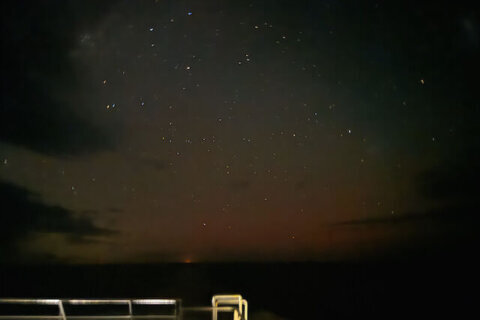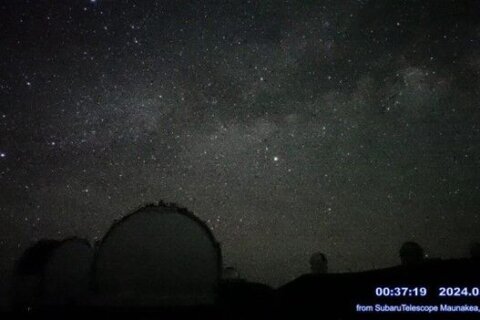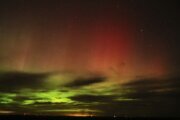WASHINGTON — This weekend, especially on Sunday and Monday night, we will enjoy the peak time for what I think is the best meteor shower of the year — the Geminids. I call it the best because it reliably produces a large number of meteors per hour (60+) in a dark sky, and many of them are bright. The Geminids is the only major meteor shower that lets you see a good number of meteors starting at 10 p.m. local time, instead of the hours just before dawn.
The predicted peak of the 2015 Geminid Meteor Shower is the night of Dec. 13-14, but you can see them from Dec. 12 through Dec. 16. Each year at this time, the planet encounters a debris stream of rock particles made by Asteroid 3200 Phaethon. The Geminids is the only meteor shower caused by an asteroid, or what astronomers call a rock comet — all others are due to cometary debris.
As Earth moves in its orbit around the sun, it collides with this rocky debris stream and the particles hit the atmosphere at 22 miles per second to become shooting, or falling, stars. It is thought that the Geminds are brighter than other meteor showers because they involve larger and heavier debris than normal cometary dust and penetrate deeper into the atmosphere.
The best place to see the Geminids is a location that is away from lights and obstructions such as trees and buildings. If you are a city dweller, you still may see the brightest Geminids as long as you are not staring into a streetlight or nestled in among tall buildings. The view of the Geminids is worth it from the suburbs, as long as you minimize lights and obstructions as best you can. Out in the country or along the beach are the best places to be.
You do not need any equipment or know-how to enjoy the show — just find a place where you can put a lounge chair or blanket to see the sky. Starting at 9 p.m., look in the east for the constellation Gemini, for which this meteor shower is named. A meteor that is part of the shower can be traced back to Gemini. Sporadic meteors that are not part of the shower can be seen during the night as well.
The shower will continue all night until before dawn — about 4 a.m. The Moon will not be in the sky, which helps a lot to see fainter meteors. The key to watching the shower is being comfortable — in other words, warm. The Geminids can appear anywhere in the sky, but looking straight up gives you the widest viewing area — this is where the lounge chair or blanket come in handy.
Enjoy the shower with family, friends or your significant other. Some music, food and beverages are an added plus. You can also tune in on Dec. 13 to a NASA live chat on the Geminids from 11 p.m. to 3 a.m. EST.
The weather may cloud us out in the WTOP viewing area. The best bet is to check the sky to see whether it is clear when you want to go out to look for Geminids. If it is cloudy you can still observe the Geminid meteor shower by a very novel and cool means.
As I write this I am listening to meteor radar — yes, radar that scans for incoming meteors as well as satellites and space debris. It is a fascinating way — just heard one! — to monitor a meteor shower like the Geminids. Essentially, the louder a ping is, the brighter the meteor would be in the sky.
You can listen during the day and night.
Good hunting, clear skies or not!
Follow me on Twitter @SkyGuyinVA and my daily blog.







